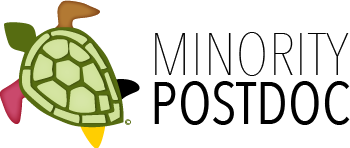Reporting from an indigenous perspective strives to change the public's perception of issues that are important to Indian Country and worldwide Indigenous Peoples, by reporting their issues as they perceive them. Often, these populations are less wary of an indigenous reporter than a non-Native reporter (many of who do remarkable jobs covering our issues). An example is covering the United Nations climate change summits in 2009 and 2010. I attended the early morning indigenous forums, during which Indigenous leaders complained that no journalists were attending, nor were covering their issues (although there was a focus on REDD, Reducing Emissions from Deforestation and Forest Degradation). I reported their forced lack of participation in the climate talks for both Native and non-Native publications; and, I was one of very few, if any, who did. We need to hear their voices.
My focus is the environment, environmental health, and climate change. There is still much work to be done to increase awareness and response to climate impacts in Indian Country. Native American readers turn to our publication (Indian Country Today Media Network) for their news, and I feel an urgency to "keep up" with new scientific developments for my reporting in High Country News and Indian Country Today.
American Indians/Alaska Natives die of complications of the H1N1 influenza A at a rate four times higher than the general population. Other influenza epidemics have shown similar epidemiology. The U.S. Centers for Disease Control and Prevention, and the Indian Health Service (IHS) have not been forthcoming about genetic causes, and the IHS has in fact claimed it is not genetic but rather is due to lifestyle factors. A research study in Australia, which included Alaska Native populations, found the cause was due to our historical isolation from influenza viruses. I reported their study to our readers with information about vaccines and anti-virals; the best outcome of which would be commencement of a CDC investigation in order to best protect our country's indigenous populations. In Australia, the researchers endeavor to develop a specialized vaccine for their indigenous populations. These are examples of the importance of minority news reporters covering science, health, and environmental issues for their own populations.
I have encouraged independent Native journalists to join the Society of Environmental Journalists (SEJ) for covering the environment, science, and health. SEJ has a Diversity Task Force, as well as a Diversity listserv open to non-members.
I have always loved science, and am by nature intensely curious
My education is not in science, yet I have always loved science, and am by nature intensely curious. I embarked on environmental reporting in 1993, and I have since become passionate about science writing. I report science issues in a variety of disciplines for my publication, a rewarding endeavor of high value to our readers, but that requires acquiring knowledge of, and staying up to speed on the science. For example in reporting climate science I have poured over reports and data. I rely on scientists and authors for further explanations to have a complete understanding before embarking on the narrative. I am grateful for the gracious assistance from my sources.
I'm attending the ScienceWriters 2014 conference to learn how to better communicate science, and for advice, encouragement, and networking.
References
T. Hansen (2011) Tribes: The Overlooked U.S. Climate Delegate, High Country News, January 19
T. Hansen (2014) Indigenous Peoples' Higher Risk to Bird Flu Driven by Genetics, Isolation, Indian Country Today Media Network, January 13
The citation for this article is:
T. Hansen (2014) Science, Health, and Environmental Reporting for Indian Country. DiverseScholar 5:6
Terri Hansen (Native American, Winnebago Tribe of Nebraska) is a journalist covering the science and environment beat for the national Indian Country Today Media Network, as well as environmental magazines. Ms. Hansen's focus is the environment, environmental health, and earth and climate sciences as pertains to Native and Indigenous communities. (See clips at Muckrack.) She hails from Portland, Oregon, and has lived in a number of natural areas of the Pacific Northwest. She earned her undergraduate degree in communications from Portland State University. She is the recipient of fellowships from the National Press Foundation, the Society of Environmental Journalists, the Association of Health Care Journalists, and the Earth Journalism Network. Any opinions expressed in this article are solely those of the author.
Originally published 14-Oct-2014
DiverseScholar is now publishing original written works. Submit article ideas by contacting us at info@DiverseScholar.org. This work is licensed under a Creative Commons Attribution-Noncommercial-No Derivative Works 3.0 Unported License.
![]()
